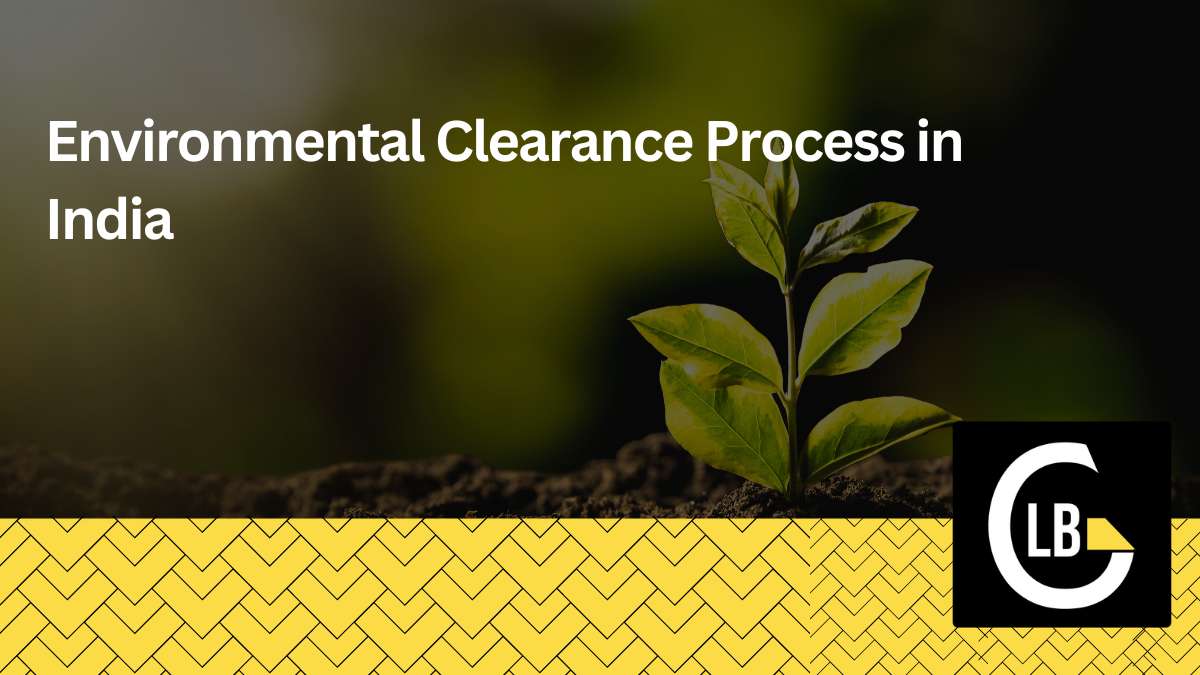India’s rapid economic growth brings the challenge of balancing industrial development with environmental protection. This is where the Environmental Clearance (EC) process becomes essential. Before starting large-scale projects, companies must obtain EC approval from the government to assess and minimize potential environmental impacts.
In this blog, we’ll walk you through the environmental clearance process in India, its importance, and how businesses can navigate it smoothly.
What is Environmental Clearance?
Environmental Clearance (EC) is a mandatory approval process for certain industrial and infrastructure projects in India. It ensures that the project complies with environmental regulations and mitigates any potential harm to the ecosystem. Essentially, it’s a safeguard to minimize the impact on air, water, land, biodiversity, and nearby communities.
This requirement stems from the Environmental Impact Assessment (EIA) Notification of 2006, under the Environment (Protection) Act, 1986. Projects are classified into different categories based on their expected environmental impact, and only certain projects need to go through the EC process.
Which Projects Need Environmental Clearance?
The EC process applies to several types of projects, including:
- Mining operations
- Infrastructure developments (like highways, ports, etc.)
- Industrial manufacturing
- Construction projects (such as large residential complexes)
- Power plants
- Irrigation projects
If your project falls into one of these categories, you’ll need to apply for environmental clearance.
The Steps in the Environmental Clearance Process
- Screening
- The project is first categorized as either Category A or Category B based on its potential environmental impact. Category A projects, which have a higher environmental impact, need clearance from the Ministry of Environment, Forest and Climate Change (MoEFCC). Category B projects are handled by the State Environmental Impact Assessment Authority (SEIAA).
- Scoping
- In this phase, key environmental issues related to the project are identified. Authorities provide a Terms of Reference (ToR) that outlines what needs to be studied in the Environmental Impact Assessment (EIA) report.
- Public Consultation
- Local communities and stakeholders are given a chance to share their feedback and concerns regarding the project. This input is an essential part of the process, ensuring that the project doesn’t negatively impact the local environment or residents without considering their views.
- Environmental Impact Assessment (EIA)
- The project proponent then prepares a detailed EIA report, which assesses the potential environmental damage and suggests ways to mitigate it. The report looks at factors like air and water quality, soil health, noise levels, and the impact on local ecosystems.
- Appraisal
- An Expert Appraisal Committee (EAC) or State Expert Appraisal Committee (SEAC) reviews the EIA report and the public consultation feedback. Based on this, they make recommendations on whether the project should be approved, modified, or rejected.
- Final Decision
- The MoEFCC or SEIAA makes the final decision. If approved, they issue an EC with specific conditions aimed at reducing environmental damage.
Why is Environmental Clearance Important?
The EC process is vital for ensuring that projects are developed responsibly and with minimal harm to the environment. Some of its key benefits include:
- Protecting natural resources: By assessing and mitigating environmental risks, the EC process ensures that projects are sustainable.
- Public involvement: Giving communities a voice in the decision-making process helps ensure that development is done transparently and fairly.
- Legal compliance: Obtaining EC helps businesses stay compliant with Indian environmental laws, reducing the risk of legal troubles down the line.
Common Challenges in the EC Process
While the environmental clearance process is essential, it’s not without its challenges:
- Time-consuming: The process can take several months, delaying project timelines.
- Complex documentation: Preparing a comprehensive EIA report and navigating government regulations can be resource-intensive.
- Public opposition: In some cases, local communities may oppose a project, which can lead to delays or even the cancellation of the project.
Conclusion
The Environmental Clearance process is a crucial tool for ensuring that India’s development is sustainable and responsible. Although it can be a lengthy and sometimes complex procedure, it plays an essential role in protecting the environment and involving local communities in major development decisions.
If your business needs environmental clearance, understanding the process can help you avoid delays and ensure that you meet all regulatory requirements. Proper planning and compliance not only protect the environment but also ensure that your project can move forward smoothly.
